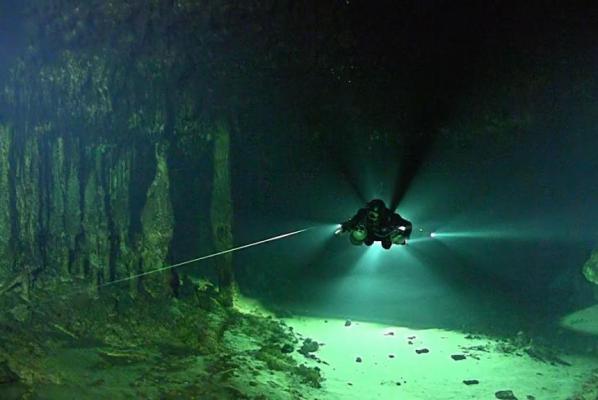
Nov. 28 (UPI) — Methane-eating bacteria anchor the food chains and ecosystem occupying the otherworldly flooded caves of Mexico’s Yucatan Peninsula.
Scientists recently completed a comprehensive survey of the unique ecosystem, the most in-depth yet. They published their findings this week in the journal Nature Communications.
During their expedition to the Ox Bel Ha cave network located along the northeastern coast of the Yucatan, scientists observed distinct layers of freshwater from rainwater and salt water from the ocean. There is an intermediary brackish layer but, since there are few forces to encourage mixing, the two layers mostly remain separate.
Until now, scientists thought bits of decaying organic matter from the forest floor would serve as the main food source at the bottom of the cave’s food chain. But the latest survey reveals very little debris. Instead, dissolved matter, including carbon and methane, support communities of bacteria similar to those found surrounding cold seeps in the deep ocean.
“Finding that methane and other forms of mostly invisible dissolved organic matter are the foundation of the food web in these caves explains why cave-adapted animals are able to thrive in the water column in a habitat without visible evidence of food,” David Brankovits, a researcher at Texas A&M University at Galveston, said in a news release.
The food chain within the flooded cave system is dominated by crustaceans, including a unique shrimp species adapted to life in the dark, still caves. Methane comprises 21 percent of the shrimp’s diet.
The flooded cave ecosystem boasts little oxygen. Research suggests the ocean is becoming less oxygenated. The parallel inspired the latest investigation of Ox Bel Ha.
“The processes we are investigating in these stratified groundwater systems are analogous to what is happening in the global ocean, especially in oxygen minimum zones where deoxygenation is a growing concern,” said John Pohlman, a biogeochemist with the U.S. Geological Survey. “Although accessing these systems requires specialized training and strict adherence to cave diving safety protocols, relative to the complexity of an oceanographic expedition, the field programs we organize are simple and economical.”
Researchers say their efforts will offer a baseline with which to compare future surveys, allowing scientists to monitor changes triggered by sea level rise.






